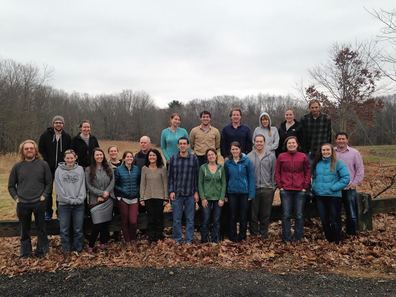 The Saltmarsh Habitat & Avian Research Program (SHARP) crew, 2015
The Saltmarsh Habitat & Avian Research Program (SHARP) crew, 2015 Tidal marshes are unique habitats that provide ecosystem services such as water quality improvement, flood control and moderation of storm surges during weather events, and sequestration of carbon dioxide. They also provide habitat for migratory birds, fish, and wildlife, including several endemic species. However, between the 1950’s and 1970’s, nearly 50% of the tidal marshes along the United States’ Atlantic coast were lost due to human activity. SHARP researchers strive to inform management actions across the northeast United States for the long-term conservation of tidal marsh birds and the ecosystem that supports them. SHARP also provides a consistent platform for monitoring the health of North America’s tidal-marsh bird communities and the marshes they inhabit in the face of sea-level rise and upland development.
At the 2015 Working Group Meeting, SHARP members discussed current research projects and developed new ideas for future research and conservation strategies for tidal marshes and their wildlife. Members discussed a Species Status Assessment for the saltmarsh sparrow (Ammodramus caudacutus) that will be presented to the U.S. Fish & Wildlife Service in early 2016 as part of a proposal for listing the species under the Endangered Species Act. The saltmarsh sparrow is an imperiled tidal marsh obligate breeding sparrow. Conservation of habitat for this species will protect the entire suite of typical tidal marsh inhabitants which is the overarching goal of SHARP.
 RSS Feed
RSS Feed
